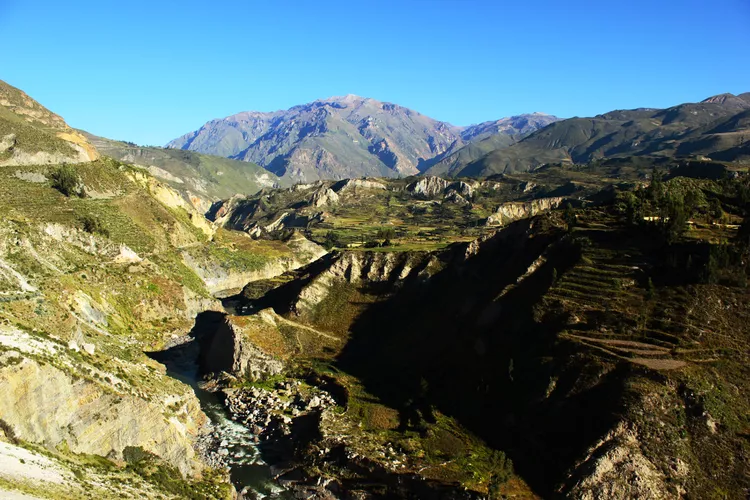About Colca Canyon
The Colca River begins high in the Andes at Condorama Crucero Alto, dropping down to the Pacific in stages and changing its name to Majes and then Camana as it flows. Within the tiny mountain villages of Chivay and Cabanaconde lies a remarkable geological feature known as Colca Canyon.
This canyon is reportedly the deepest in the world, believed to be twice as deep as the Grand Canyon in the USA. Unlike most sections of the Grand Canyon, portions of Colca Canyon are habitable, with pre-Colombian terraced fields that continue to support agriculture and human habitation.
What attracts increasingly more visitors each year, alongside the breathtaking scenery, are the majestic Andean condors. Unfortunately, the condor population in South America is dwindling, yet at Colca Canyon, visitors have the chance to observe them from relatively close range as they float on rising thermals and search for carrion far below.
The river valley was known to the Incas and earlier civilization. The Spaniards established townships in the valley, possibly planning to utilize the Rio Colca valley as a route to Cuzco and other important Andean locations. They constructed churches along the route, notably one in Coporaque. However, for unexplained reasons, these towns did not flourish, leading to the route fading from collective memory.
Interest in Colca Valley was rekindled in the early 1930s by the American Geographical Society. The Colca Valley has gone by various names, including The Lost Valley of the Incas, The Valley of Wonders, The Valley of Fire, and The Territory of the Condor. It has also been referred to as one of the Seven Natural Wonders of the World.
In the 1980s, following the development of the Majes Hydroelectric Project, roads opened the Colca to external visitors. One of the key attractions for travelers is the insight into a way of life that has remained isolated for centuries.

Getting There and How to Do It
Accessing Colca Canyon is generally via Arequipa, the second-largest city in Peru, often referred to as the Ciudad Blanca (White City) due to the distinctive white volcanic ashlar stone used in its architecture. Arequipa is located approximately three hours away by bus or van. Tours to Colca Canyon can be arranged in Arequipa if you do not already have a tour group.
Buses travel to Chivay and Cabanaconde on either end of the canyon, allowing visitors to begin their explorations from either location. A popular choice among many travelers is to reach Chivay in the afternoon, spend the night there to acclimatize to the altitude, and then embark on a tour of Colca Canyon the following day.
A highlight of any visit to Colca Canyon is the stop at Cruz del Condor, the vantage point where visitors can witness condors soaring majestically on the rising thermals as the air warms. Arriving early is recommended to observe these magnificent birds in flight. They typically hunt during the morning or late afternoon, making it an unforgettable experience. It is important to note that there are no safety railings, and the canyon floor lies 3,960 ft (1,200m) below the viewing area; therefore, caution is advised.
Apart from the stunning views at Colca Canyon, visitors can unwind at the La Calera hot springs in Chivay after a day of exploration. Additionally, the Toro Muerto cemetery of the Wari Indians, where burials were conducted in a fetal position, is fascinating and intriguing, located on a 90-degree steep cliff face.
If you are considering hiking or trekking in the canyon, taking the time to acclimate to the altitude is essential, as well as carrying necessary provisions. Remember to bring cash since ATMs and traveler’s checks are not widely accepted in the small towns of the area. For sun protection at high altitudes, a hat, sunscreen, and sunglasses are strongly recommended. Staying hydrated is crucial, so ensure to take your own water or water purification tablets or equipment. A good camera is also advisable to capture the remarkable views.
Rafting on Rio Colca is a thrilling option for adventure seekers, providing splendid views of the canyon walls from the river. Others may enjoy biking along the canyon roads.
Colca Canyon is accessible year-round; however, it is most breathtaking and safer after the rainy season concludes. Nearby volcanic activity, particularly from Volcan Sabancayo, can lead to landslides and unstable ground, while Ampato is remembered for being the site where the Ice Mummy was discovered.





